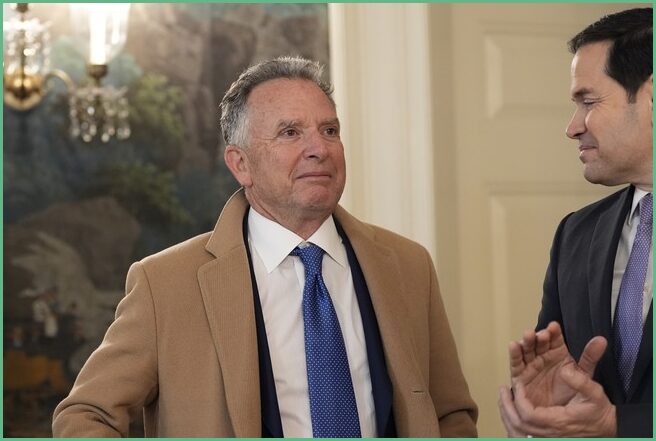President Trump has outlined a blunt peace idea: both sides stop at the current front lines and accept that map as the new reality. It was meant to be simple and fast, a way to halt bloodshed without endless American entanglement.
Now reporting shows Trump’s lead negotiator, Steve Witkoff, has been pushing Kyiv to surrender the Donetsk region to Russia in exchange for peace. That demand would be the clearest test of whether Trump’s front-line solution is practical or political theater.
Donald Trump’s lead negotiator has been pushing Volodymyr Zelensky to hand over the entire Donetsk region to Russia in order to end the war in Ukraine, it has emerged.
As I wrote on Friday:
At present, Russia controls a large swath of eastern Ukraine, including the Donbas region, the cities of Luhansk, Horlivka, Donetsk, Melitopol, and the port city of Berdiansk.
Russia has also seized some key infrastructure, such as the Zaporizhzhia nuclear power plant. This is about 20 percent of Ukraine’s territory, including between 3 and 3.5 million Ukrainians. And these are just the post-2022 invasion territories taken by Russia, which doesn’t include Crimea, which Russia seized in 2014.
That’s a bad deal for Ukraine by any measure, and one they are reportedly unlikely to consider.
Mr Trump, who has called on both sides to “stop the killing” and “make a deal”, has agreed to meet Putin in Hungary within a fortnight.
But the Russian president’s continued insistence on the surrender of Donetsk suggests that a fundamental obstacle towards a ceasefire deal remains.
In the call with Mr Trump, Putin said Russia could cede parts of the Zaporizhzhia and Kherson provinces currently occupied by his forces.
However, a senior European diplomat told The Washington Post that Ukraine would never agree to such a trade.
For Ukraine, the ask is a bitter pill; giving up territory is more than a line on a map, it’s towns, families and the sense of national dignity. Kyiv is unlikely to accept a deal that cedes large swaths to an invading power, understandably.
From a Republican perspective, the question is ugly but real: do you let a war grind on indefinitely or force a quick stop that spares more lives and resources? Many on the right see negotiation as a pragmatic tool, not a capitulation, especially if it reduces American exposure and ends endless funding battles in Congress.
Donetsk is strategically and economically significant; it has Russian speakers, industrial centers and energy infrastructure that matter to both sides. Putin’s insistence on keeping it isn’t just sentimental, it’s about leverage, territory and resources.
Putin has reportedly signaled he might return parts of Zaporizhzhia and Kherson, which complicates any simple trade. That kind of bargaining is exactly what diplomats do, but it’s also why Kyiv and its Western backers are skeptical of a deal that looks one-sided.
Mr Trump plans to meet President Putin in Hungary, and that meeting will test whether his approach can produce a ceasefire or just rubber-stamp wartime gains. Republicans will argue the meeting is a chance to stop the killing and protect American interests without open-ended commitments.
Critics will say any arrangement that rewards aggression sets a dangerous precedent, and they have a point that must be taken seriously. But the alternative, endless war with mounting costs and no clear endgame, has real political and moral consequences too.
This is raw, real-world statecraft, with ugly choices, trade-offs and the risk that negotiations fail or backfire. The coming days will reveal whether diplomacy can carve a stable peace or whether this debate will only deepen divisions at home and abroad.



